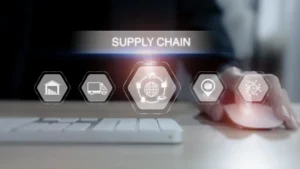In recent years, the shipping industry has faced significant pressure to reduce its negative environmental impact. This push has led to the rise of zero emission shipping as a key focus. Zero emission shipping refers to the transportation of goods without releasing harmful pollutants into the atmosphere. With climate change on everyone’s mind, finding cleaner alternatives is essential. It involves using technology and practices that completely eliminate emissions during transportation. This blog will explore what zero emission shipping means, its benefits, and the innovations driving this change.
Why is Zero Emission Shipping Important?
The shipping industry is a major contributor to greenhouse gas emissions. These emissions lead to climate change and air pollution, which can harm public health and the environment. By adopting zero emission shipping, companies can help combat these issues. Cleaner practices used by any international sea freighting service provider led to a healthier planet and promoted a better image for businesses.
Innovations in Zero Emission Shipping
The move towards zero emissions has sparked numerous innovations in shipping technology. Companies are investing in cleaner fuels like hydrogen and electricity. These alternatives significantly reduce emissions compared to traditional fuels. Zero emission vessels are being developed to support this shift, using renewable energy sources for power. These advancements promise a more sustainable future.
Benefits of Zero Emission Shipping
- Environmental Impact: Reduced emissions lead to cleaner air and a healthier planet.
- Regulatory Compliance: Many countries are implementing stricter regulations on emissions. Adopting zero emission strategies can help companies stay compliant.
- Cost Efficiency: While initial investments may be high, long-term savings on fuel and operational costs can be significant.
- Customer Satisfaction: More consumers are choosing environmentally friendly options. Businesses that adopt sustainable practices can attract eco-conscious customers.
- Competitive Advantage: Companies committed to zero emission shipping can differentiate themselves in the marketplace.
- Sustainability: Companies may opt for door to port shipping services that emphasize sustainability.
Special Equipment Containers Used in Zero Emission Shipping
Special equipment containers are essential for transporting oversized and delicate items. They ensure that cargo is secured and protected during transit. These containers come in various sizes and types, tailored to meet specific shipping needs. For instance, refrigerated containers maintain temperature-sensitive goods. The use of special equipment containers enhances efficiency in low emission cargo transport, further supporting zero emissions goals.
Low Emission Cargo Solutions
In addition to zero emission shipping, companies are also exploring low emission freight options. These methods reduce emissions without entirely eliminating them. Low emission sea freight solutions are gaining popularity, providing a middle ground. They allow businesses to minimize their environmental footprint while still transporting goods effectively.
The Role of Technology
Technology plays a critical role in advancing zero emission shipping. Innovations such as automated systems improve efficiency. Digital tracking helps optimize routes, reducing fuel consumption. Additionally, advanced materials for containers make them lighter and more efficient. As technology continues to evolve, so will the shipping industry’s ability to go green.
Best Practices Used for Zero Emission Shipping
Carbon neutral shipping is another term often mentioned alongside zero emission shipping. This concept focuses on balancing out emissions by investing in projects that reduce or capture greenhouse gases. Companies can opt for door to port shipping services that promote sustainability. Such services prioritize using eco-friendly vessels and practices throughout the shipping process. An international sea freighting service dedicated to zero emissions ensures that businesses can move goods efficiently while minimizing environmental impact.
Challenges to Zero Emission Shipping
Transitioning to zero emission shipping is not without its challenges. Infrastructure needs significant upgrades to support new technologies. The availability of renewable energy sources is still developing in some regions. Furthermore, the cost of implementing zero emission solutions can deter some companies. However, with increasing demand for sustainable practices, these challenges are being addressed.
The Future of Shipping
The future of the shipping industry lies in embracing zero emissions. As more companies recognize the importance of sustainability, the demand for eco-friendly solutions will grow. Investment in research and development is vital for creating new technologies and methods. The shipping industry must adapt to survive in an increasingly eco-conscious world.
Zero emission shipping represents a crucial step toward a sustainable future for the cargo and courier industry. Companies like Travelite are leading the way by adopting cleaner technologies and practices. By prioritizing zero emission shipping, businesses not only contribute to environmental protection but also enhance their competitiveness in the market. Embracing this change is not just beneficial but also essential for the health of this planet.










